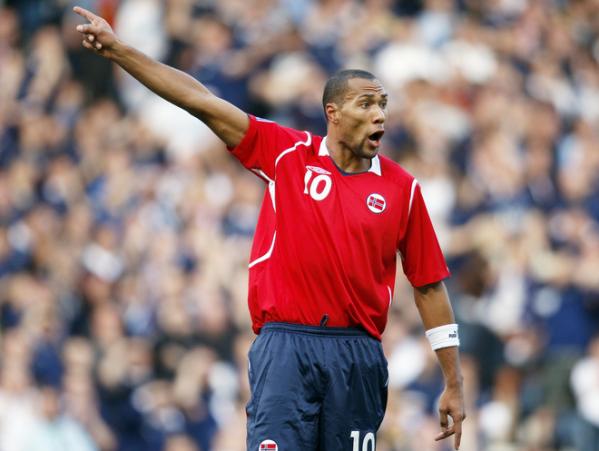
[David Patrick Lane, writing from Liverpool, is working his way through the European qualifiers for the World Cup in South Africa. Last week he reviewed Scotland‘s chances. This week it’s Norway. Next week, Macedonia]
Lurking in dead last place in Europe’s Group 9 is Norway.
Winless: Three points accumulated through three grinding draws. Toothless: Two goals scored, both at home in their opening fixture against Iceland. South Africa may seem further away than usual to supporters in Spitsbergen.
I am not sure if playing dead was an old Viking trick, but folks up in the Svalbard Archipelago should not be so surprised if Norway rise up and navigate their way to the Western Cape next summer.
Three games to go, two in Oslo, and the other, a short long-boat trip across to Iceland. Norwegian commentators may yet still have a chance to report on heaps of vanquished Macdougalls and Macedonians [Norway plays Scotland next], bloated, floating in the Fjords.
Norwegian football first came to global prominence in 1981, when Norway beat England 2-1
in a World Cup qualifier in Oslo. Scandinavian football was transitioning from amateur to professional. Many Norwegian footballers had other day jobs. It was a proud moment, best described by the late great Norwegian radio commentator, Bjørge Lillelien.
Norwegian football built on this famous 1981 victory producing professionals that have graced the best leagues in Europe. Norway qualified for the 1994 and 1998 World Cups, at one point finding themselves accused of being the 2nd best team in the World by FIFA’s
ranking computer.
The man behind Norway’s success then was Egil Olsen. The Professor. The Coach in the Wellies. The Card Carrying Member of the Norwegian Workers Communist Party. Despite Norway’s relative success, most neutrals prefer to remember Norway as purveyors
of boring football, instigated by Olsen’s long ball philosophy.
But just when you thought you were safe from long ball sorties and you could write Norway off, he’s back. Back from Baghdad via Wimbledon.
Norway’s first game under Olsen’s new management was a February friendly away in
Dusseldorf. The Professor gave the Germans a lesson in how to lose 1-0 at home.
Connoisseurs of the game may chafe at the prospect of Norwegians lining up 4-5-1 in Cape Town, but there will be more than a few South Africans with reason to cheer for Norway.
The “Norwegian South Africa Committee” was founded in 1958, providing scholarships to black South Africans. The chairman was Mr. Gunnar Jahn who, at the same time, was a member of the Nobel Peace Prize committee. He played an important role in the decision to award Chief Albert Luthuli the Nobel Peace Prize in 1961. Other Norwegian organizations followed establishing funds for the victims of apartheid and led boycott campaigns against South Africa. By 1977 the Norwegian government was funding the African National Congress through various churches, charities and consulates.
Norway supported The Struggle. This support will not be forgotten should Norway qualify for the World Cup Finals in South Africa.
We will be watching John Carew and company closely in their remaining qualifiers. The Tartan Army invade Oslo in August.
One reply on “Norway’s Struggle”
Will 10 Points and +2 goal difference be enough?
It’s doubtful, but there are as many equally poor sides in Europe’s 2nd tier capable of screwing up their remaining fixtures….